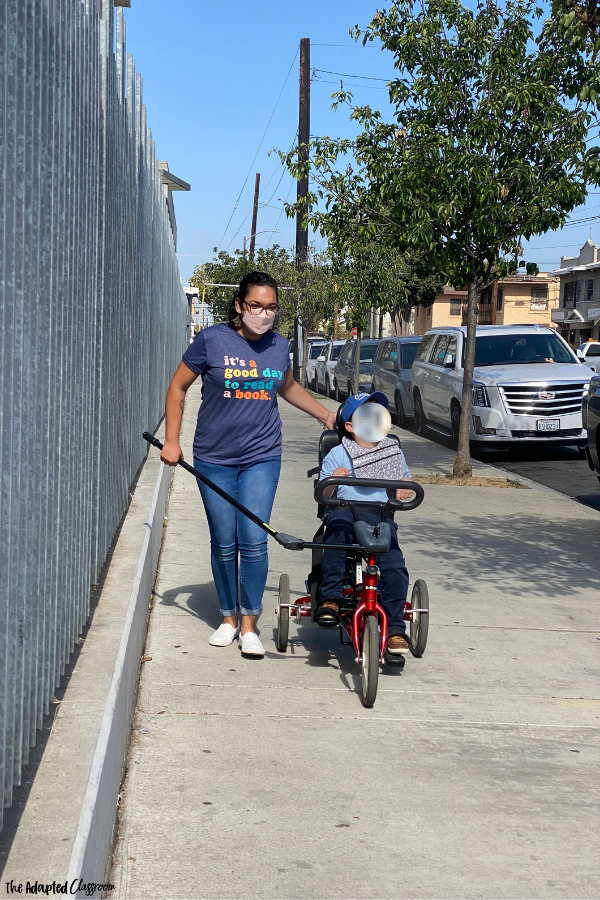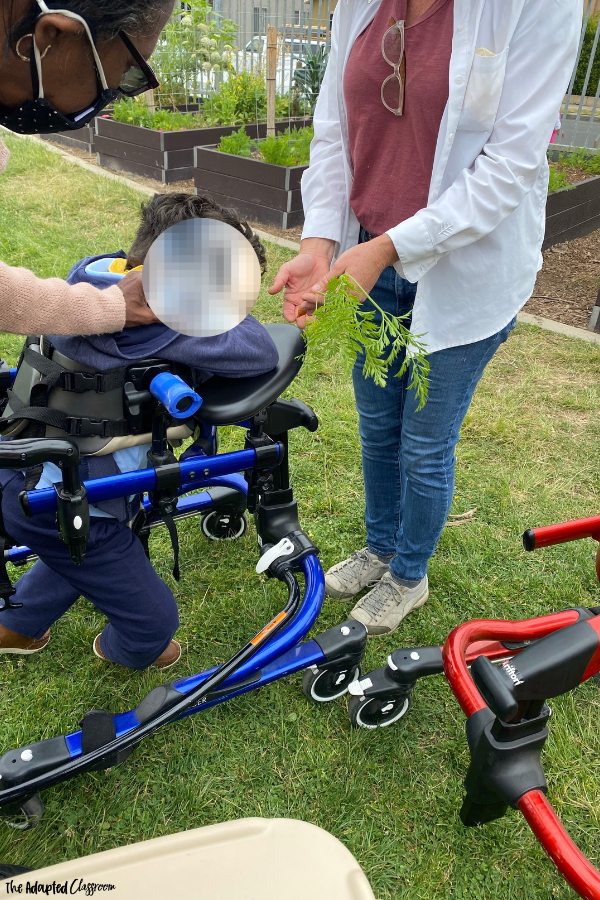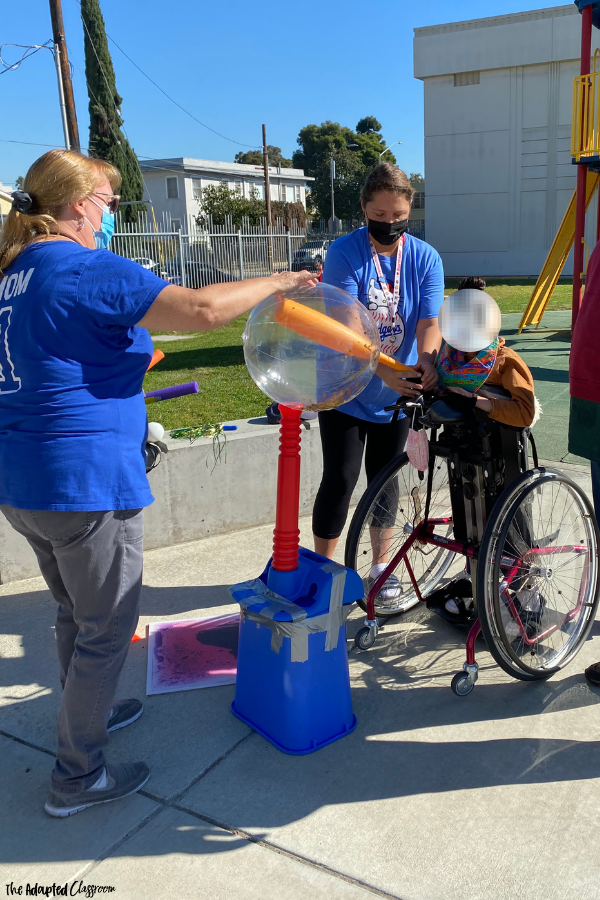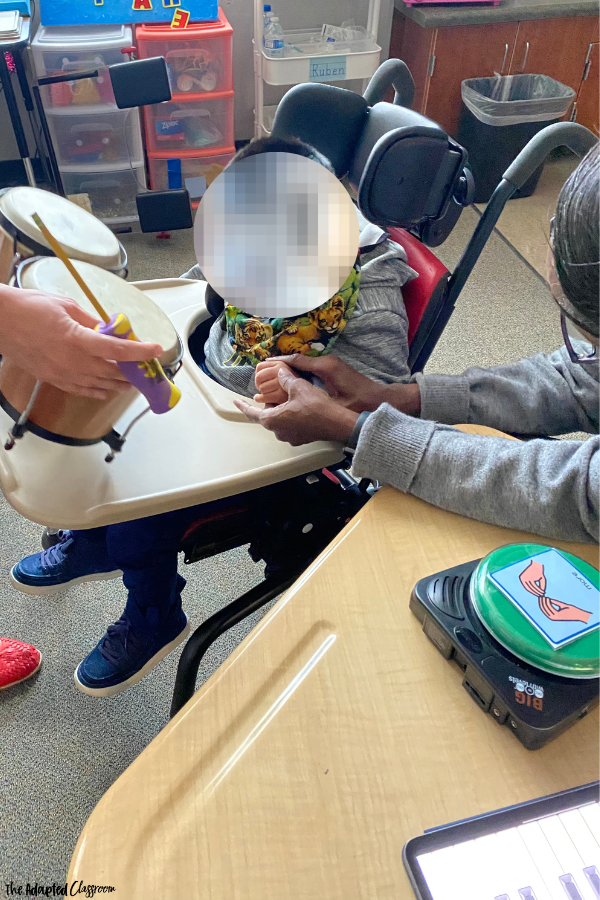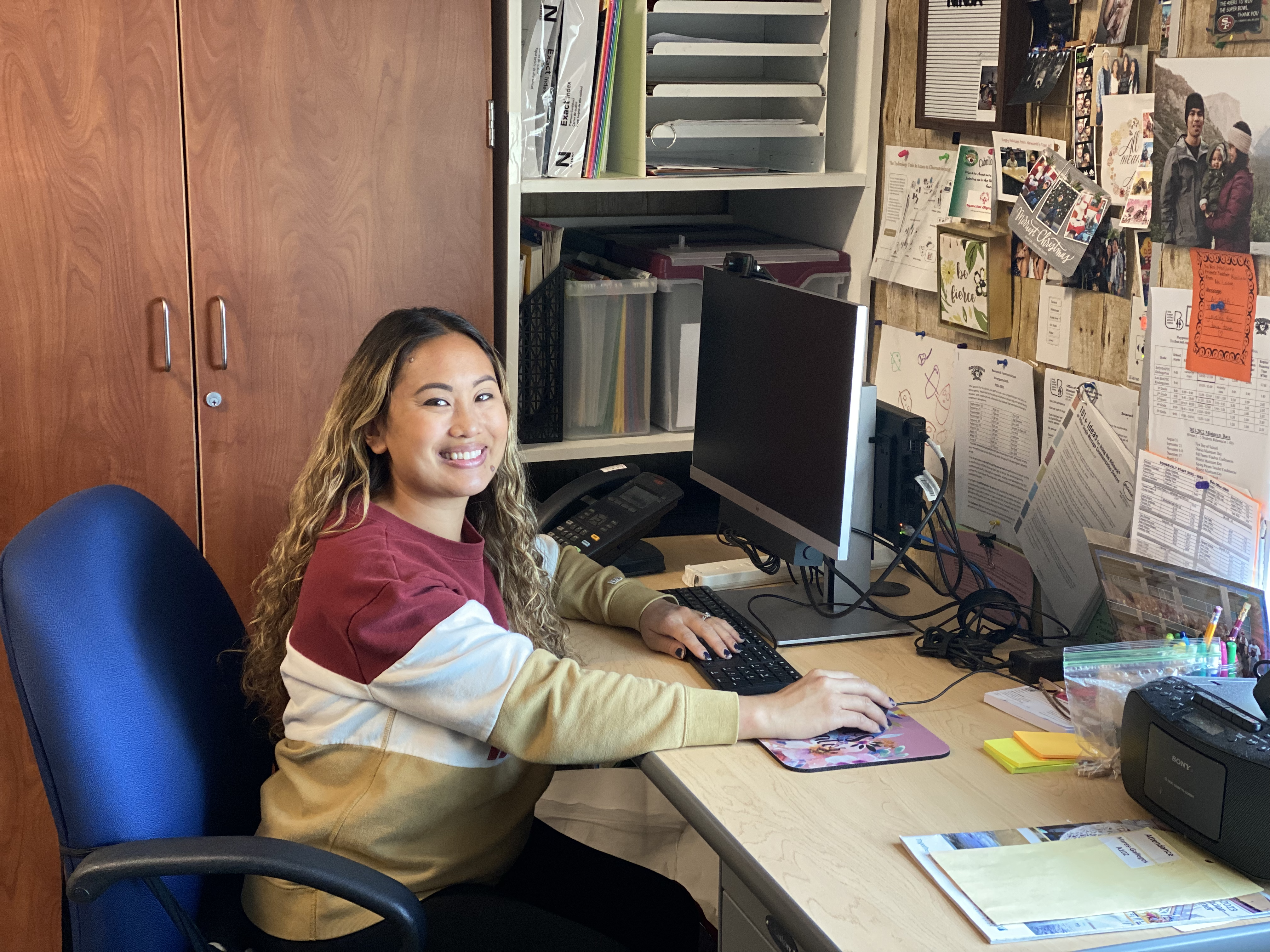5 Tips for Using AAC for Communication in the Classroom
- 1 Comment
- by Rhosemarie
What IS AAC?
AAC stands for Augmentative and Alternative Communication. AAC encompasses all the way someone communicates without talking. There are many AAC methods of communication.
AAC includes no tech or low tech options such as:
- drawing
- writing
- pointing to photos or pictures
High tech options include
- A tablet or Ipad with a speech app
- A speech generated device such as a button with a pre recorded message.
What are the benefits of AAC devices for communication? AAC gives students the opportunity to communicate their thoughts, ideas, wants and needs.
Here are my tips for using AAC for communication to help support and grow student communication in the classroom.
1. Make AAC devices easily accessible
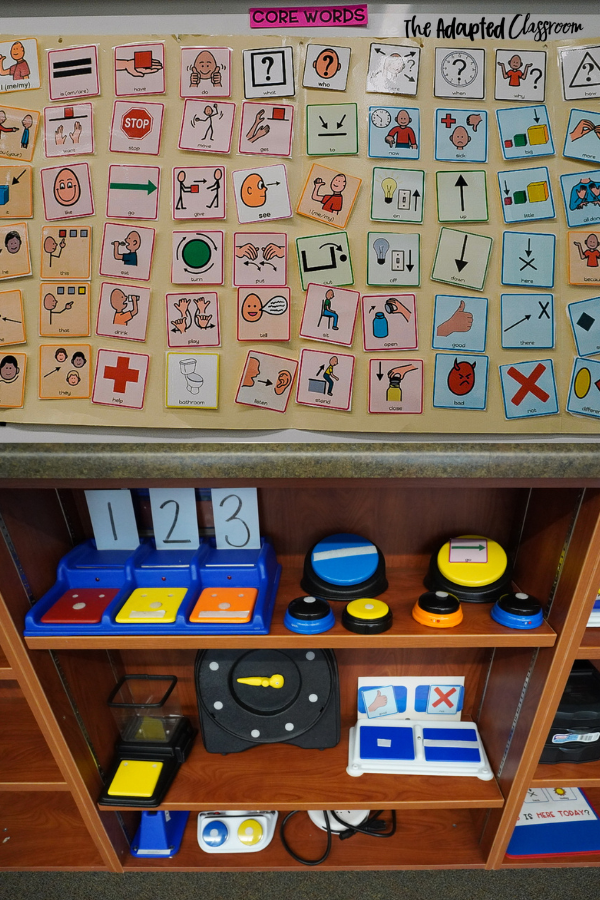
I know we’ve all heard the saying, “out of sight out of mind”. The easiest way to ensure AAC devices are being used in the classroom is to keep them in sight! Make sure they are visible and within reach to all students and staff in the classroom. In my Classroom, all AAC devices are placed on easily accessible shelves and desks within eye sight of staff and students. If a student brings a device to school from home, our first order of business is to take it out of their backpacks and place it on their desk. Making devices easily accessible makes it easier to remember to use it throughout the day.
Have a plan B
Sometimes students arrive to school with a device that is not charged, or they leave their device at home. Consider having extra chargers and low tech options available. In my classroom, we have laminated core word boards ready to use. Core vocabulary make up 80% of words we use in everyday conversation. I like to carry around a core word board and point to words as I say them.
In need of a core word board? I got you covered! Grab free core word boards here in my TPT store.
2. Create routine
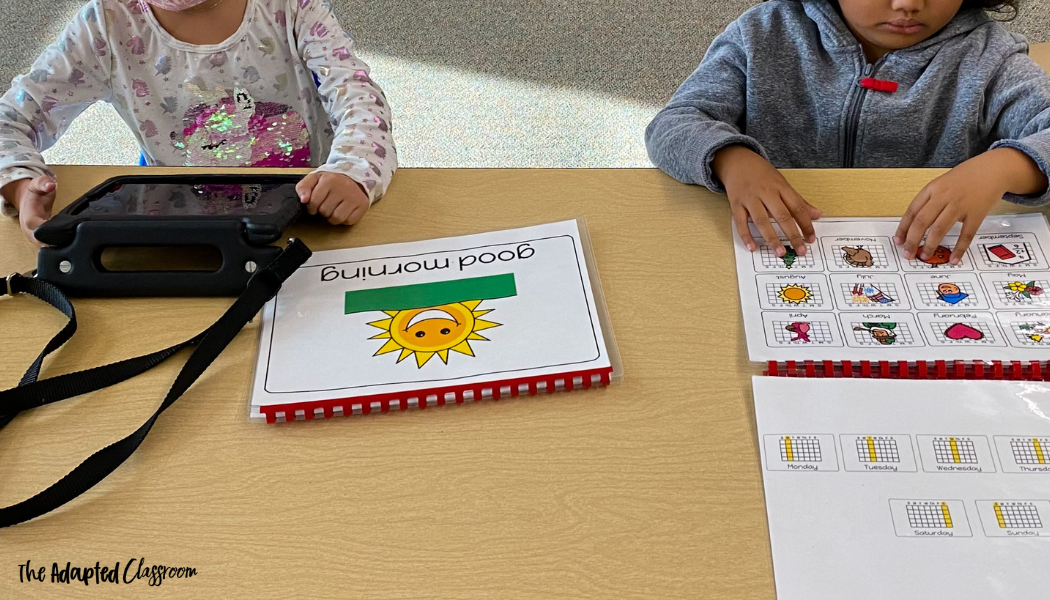
If there’s anything our students in special education need the most it’s routine! Take a look at your schedule, and ask yourself what communication opportunities can I implement everyday? Create meaningful and purposeful opportunities for students to practice the same language over and over again. Set small goals and implement AAC into your classroom schedule slowly. This can be as simple as bringing an AAC device out to the bus, and using it to greet students, “good morning!” Or keeping a prerecorded button near the door that says “goodbye” when pushed. Stay consistent with the AAC opportunity and slowly add more opportunities to your daily routine.
Wait, and then wait some more!
Be patient, learning anything new, especially learning a new communication method takes time. Give students the opportunity to use the AAC device without prompting. When you have the urge to prompt count to 10 before modeling again. It may feel awkward, but giving your students wait time may be one of the best things you can do for them.
3. Plan ahead
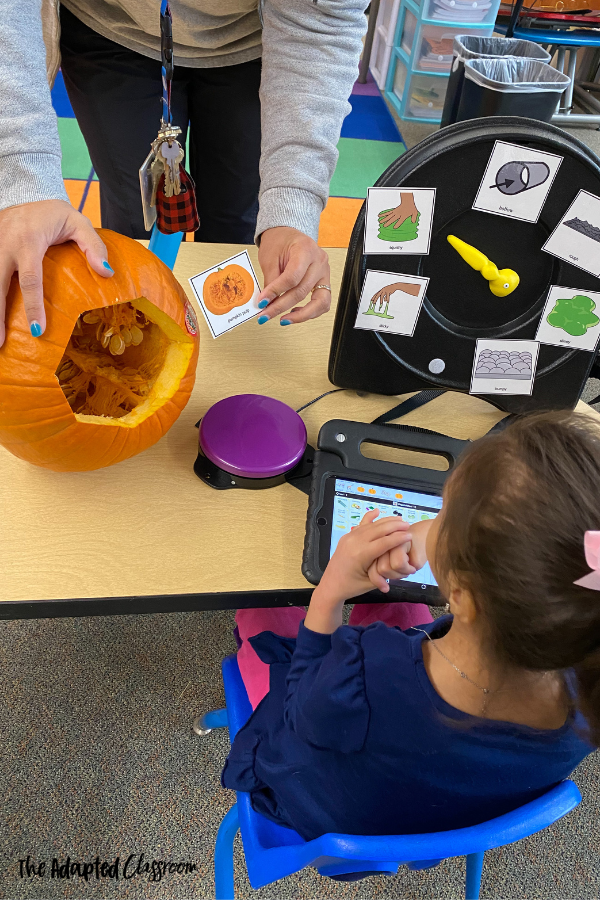
Just like everything else in our classroom, we see success and growth when we plan for it. Include AAC devices in your lesson planning. Plan what devices to use during a lesson. What visuals need to be be programed and/or printed out? Think about which students need to use a device and be sure to include those devices in the lesson.
During a reading lesson, program the AAC device to read a line from the story so students can help read along. In a math lesson program 2 answer choices and have students choose the correct answer. For a social studies lesson, program the historical event or person and have so students can talk about what they are learning today. There are many opportunities to use AAC devices, just plan it out!
4. Make it fun!
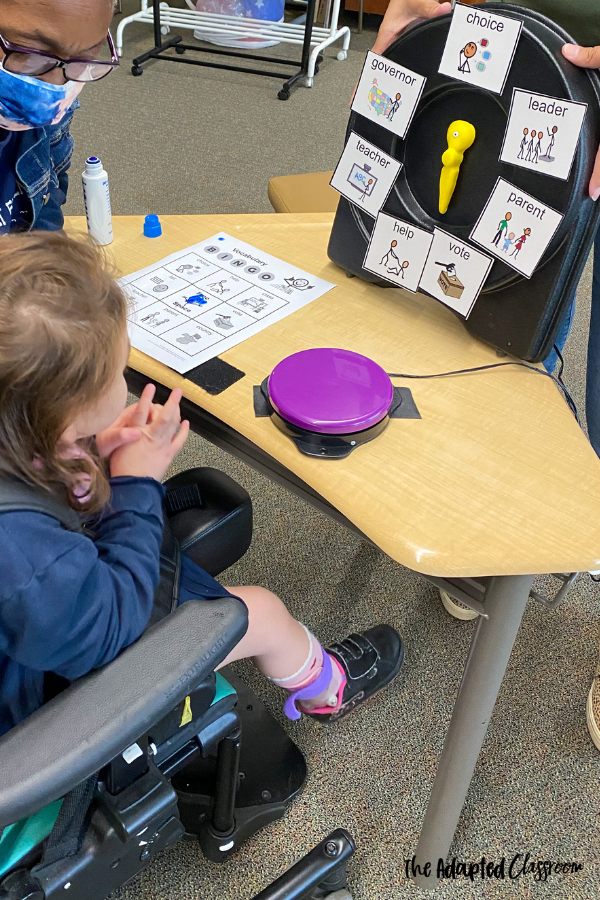
Using language isn’t just for academics or testing, it should also be used to interact and make connection with others. Include AAC during recess, free choice time, lunch, and other extra curricular activities. Program simple phrases onto the AAC device that students can use with their peers such as, “Hi! my name is ____”, “I want to play___”, “How are you doing today?” When students feel included they may feel more encouraged to use their AAC device. It’s a win win for everyone!
Stop, collaborate, & listen!
Many, if not ALL of the fun AAC lesson plans that take place in my classroom are planned by our Speech and Language Pathologist. Collaborate with your SLP to come up with fun and easy ways to implement AAC devices in your classroom. Share your lesson ideas with your SLP and ask for their input on how AAC can be included! Some of the fun lessons we have planned together include- bringing the beach to the classroom, a community based instruction trip to our local grocery store, and a fun scavenger hunt around campus!
5. Model, Model, Model!

Students (and staff) will be more encouraged to use their AAC device if they see you using it too! Maybe the device is new to you, and you’re afraid you’ll “mess up”, but that’s perfectly fine as well. Students need to see you “figure it out” so they don’t get discouraged when trying to navigate their system. It can take 50-100 models of a word or phrase before the student uses it on their device. The more you model, the more students will be exposed to language and the more they will be encouraged to try it for themselves.
For more information on the how’s and why’s of modeling, check out this article by Assistive Ware here
Bonus Tip! Just do it!
It’s never too late to start implementing AAC in your classroom. Whether it’s the beginning, middle or a couple days before summer vacation, start using AAC today! AAC gives students a way to actively participate and stay engaged in learning. On this AAC journey it is important to continue building language and communication. How do you plan to use AAC in your classroom?

